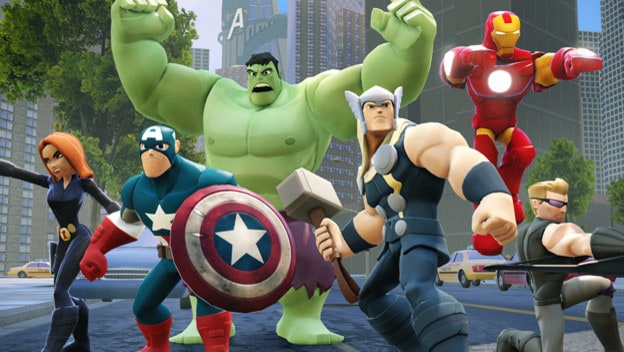Microsoft has registered a patent that suggests it may be entering into the toys-to-life arena. This is an awful idea.
Are you listening, Microsoft? With virtual and augmented reality coming early next year, PlayStation 4 outselling your console 2-to-1, and Nintendo registering patents for the NX that actually have us excited, this is the last thing that you should be focusing on. The toys-to-life genre is singing its swan song right this very moment, and NFC toys are soon to be a thing of the past. Consider this an open letter to whoever is calling the shots over there.
Your main demographic is totally over the toys-to-life thing. Microsoft platforms typically appeal to older audiences. Older gamers, myself included, have always seen this genre for what it is: a cash-grabbing ploy to exploit a younger, whinier generation who will maximize profits by not only begging for these games, but for all of the toys that come with them so they can trade and battle them during recess. Now I know what you’re thinking, I said the magic words: “maximize profits.” The thing is, you’re too late. Parents have caught on to the whole shtick. They’re looking at tubs of figurines and wondering why it’s not enough. They’ve noticed that there’s always a newer version, a next adventure, or an exclusive color variant.
Ain’t nobody got time for that! The sheer volume of toys-to-life games and figures is staggering. Let’s get this all sorted out: there are currently eight Skylanders games (including mobile), three Disney Infinity games, and over twenty Wii U and 3DS games that require the separate purchase of NFC toys to unlock all of the content. How many of these signal emitting figures are there? By the holiday season there will be over seventy-five amiibo, ninety-five Disney Infinity figures, and three-hundred Skylanders figures. It’s a mess. A few months ago it was fashionable to post a picture of your amiibo collection taking up the biggest wall of your living room; now we just think you have a problem.
Sure, amiibo had their heyday, but understand that the whole of the desire for amiibo was due to their great scarcity. Nintendo claims that it simply couldn’t keep up with demand, but we all know that was just a marketing tactic to create urgency, and boy did it work. Scalpers started popping up everywhere, charging triple retail value for a small, plastic Wii Fit Trainer. Whispers of “wave x” shipments would flood gaming forums, driving collectors to form lines at storefronts in the wee hours of the morning. A truck carrying special edition Splatoon amiibo even got hijacked ! But that was all a passing phase. Like pogs and crazy bones, these ‘collectibles’ will soon find their way to a garage sale clearance basket.

Even if you’re able to create something novel, a game really worth playing that doesn’t seem gimmicky, someone will find a way to play it without your additional NFC products. As long as we have NFC readers on our phones and computers, we’ll find a way around the system: the amiiqo has proven that. For the price of a single high-demand amiibo, you can purchase a small NFC storage device that saves and loads amiibo data to your Wii U gamepad or NFC-capable 3DS. The amiiqo can store up to 200 unique amiibo and the data is downloaded, not transferred from your figures. I’ll let you figure out the implications there. The technology is simple, and each amiibo can be viewed as a unique, digital signature. No matter how cool your product turns out to be, it won’t be safe. There will always be someone capable of forging your signature. There’s a big, blue ocean out there, Microsoft. There is no conceivable reason to enter into a market this saturated, this late in the game. Register something original, say an Oculus-compatible light gun, and then we’ll talk.
